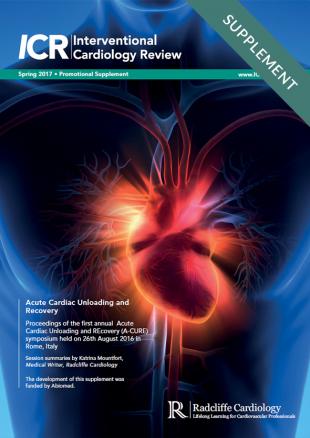Acute Cardiac Unloading And Recovery
Summary and Take Home notes
Following the presentations, the panel summarised some of the key points raised at the meeting. It is evident that clinical trials for mechanical circulatory support pose challenges that are in part mechanistic but also related to trial design. If we can reduce the cost of how we screen and enrol patients, we may allow for better evaluations of new devices and interventions, with definitive answers at the conclusion of the trial. Clinical studies in the setting of cardiogenic shock are challenging to execute, but there is a need for data.
One of the key messages of the session was the there is no one size fits all approach and we should be thinking of individualised rather than broad treatment plans. Moving forward, we now have an amazing tool that can provide haemodynamic support and avoid the use of vasopressors. However, some patients may still need vasopressors or inotropes. In these cases, the use of additional haemodynamic support will dramatically decrease morbidity.
The management of acute myocardial infarction and chronic heart failure (HF) present different challenges In the future, A-CURE may split into two groups: one focused on acute myocardial infarction and the other on chronic HF, since acute unloading will have very different effects on the two states. We need to establish the precise nature of these differences before contemplating a split. In the chronic HF setting, there is a need for a balance between left and right ventricular support. The right ventricle is dependent on the left ventricle for function, so any support for the right ventricle must not indirectly impact left ventricular function. More studies are needed in the chronic HF setting.
In terms of acute unloading, compelling evidence has been presented in favour of delaying reperfusion in order to provide mechanical circulatory support, but before moving this approach into the clinic, caution was advised; the priority should be to ensure robust protection for the patient, and delaying reperfusion for up to half an hour may not be feasible in all cases. More clinical evidence is needed to support this intervention. We need to strive for definitive answers to whether cardiac unloading is beneficial and not rely on subanalyses of clinical trials. Finally, the fields of chronic and acute unloading are merging and the focus on oxygen supply rather than demand is a fascinating approach.
Dr Kapur closed by stating that this had been a ground-breaking meeting and acknowledged support in the form of sponsorship from Abiomed.
Written By : Katrina Mountfort
Citation : Interventional Cardiology Review 2017;12(1 Suppl 1):1–24.
DOI : https://doi.org/10.15420/icr.2017.12.1.S1








